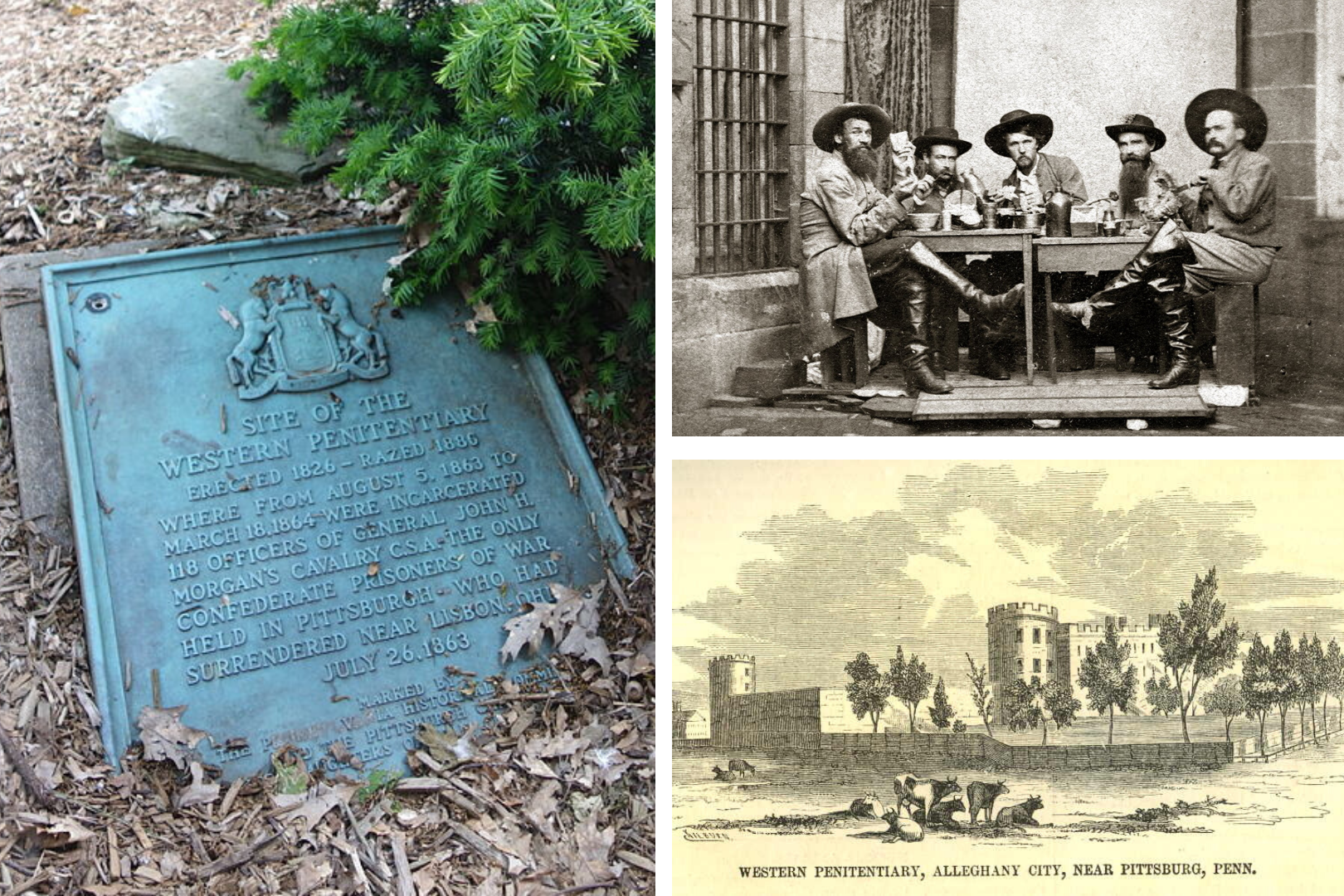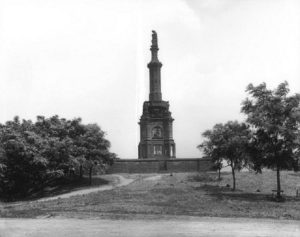
Maybe you’ve never noticed it before — the Confederate nod that sits inside an eagle enclosure at the National Aviary on Pittsburgh’s North Side.
Maybe you did notice but never gave it a second thought.
On its face, the bronze plaque recognizing the former site of a 19th-century penitentiary that also housed “the only Confederate prisoners of war held in Pittsburgh” seems unremarkable enough.
But it’s getting another look now, state officials say, with renewed scrutiny of the group behind it and with Pennsylvania removing similar plaques and markers elsewhere in the commonwealth.
The plaque isn’t owned by the Aviary and wasn’t placed there by the Aviary. It went up in 1931 and the Aviary was built around it years later.

Like a number of plaques and monuments now being removed in Fulton County, this piece was placed by the United Daughters of the Confederacy (UDC). The group remains in existence today — though the Pittsburgh chapter responsible for the plaque at the Aviary is no longer listed — and is considered a Neo-Confederate organization by the Southern Poverty Law Center. (More on that in a moment.)
When the Western Penitentiary plaque went up, it was still the Jim Crow era, a time when Black Americans’ civil rights were under attack in the U.S. and when Confederate monuments sprang up nationwide in “an organized strategy to reshape Civil War history.”
It was also the same time that a monument to 4,000 Allegheny County troops killed fighting for the Union was relocated to a spot on Lake Elizabeth, a stone’s throw away in Allegheny Commons Park, after a lengthy public debate. Critics of the Western Penitentiary plaque say this timing can’t be discounted when considering its meaning, intent or purpose.

“When you contextualize the history of this marker’s origin, it’s clear it was meant to be an insult to those that fought and sacrificed for the ideals of the Union,” reads a statement from Preservation Pittsburgh, a non-profit advocacy group dedicated to “preserving the region’s historic, architectural, cultural, and environmental heritage.”
The statement continues: “It should not have been placed then and it has no place in our city now. As perhaps the last remaining marker in Pennsylvania to be funded by the Daughters of the Confederacy, its removal would create an opportunity to tell a more meaningful, inclusive, and accessible story about the importance of Western State Penitentiary on the same site.”
The Pennsylvania Historical and Museum Commission (PHMC) owns the plaque in question. Spokesman Howard Pollman said via email:
“The Pennsylvania Historical Marker program has more than 2,500 markers in its inventory, many of which were dedicated before the existence of the Pennsylvania Historical and Museum Commission. PHMC recognizes that some markers, especially decades-old markers that we have inherited from organizations that no longer exist, may contain outdated cultural references which must be addressed. We have begun a comprehensive review of all markers and plaques that contain inaccuracies or references that are inappropriate. This review will take time. Any removal, replacement or retirement of a marker or plaque would be done in consultation with subject matter experts, local communities and interested parties.”
The Western Penitentiary plaque was put up by the UDC through a PHMC predecessor, the Pennsylvania Historical Commission, under Pennsylvania’s historical marker program. After the PHMC was created in 1945, it inherited this and similar items.
Some UDC-backed plaques and monuments inherited by the PHMC are already being removed. This includes a handful of small monuments in Fulton County, one of which is pictured here alongside two Confederate flags and one U.S. flag planted in soil.
Asked in a followup email if the Western Penitentiary plaque’s location inside the Aviary complicates any review, Pollman said: “The location is a consideration, not a complication. PHMC will not take any action without consulting with The National Aviary.”
The Aviary did not respond to The Incline’s multiple requests for comment. Today, the plaque sits prominently on the ground inside the enclosure, just behind the glass and feet away from a perched bald eagle — a symbol of the United States since 1787 and one adopted by Union troops during the war.
The same year the UDC’s Western Penitentiary plaque went up, W.E.B. DuBois wrote critically of Confederate monuments rising in the U.S. and their grandiose distortions.
“It does (…) seem to be overdoing the matter to read on a North Carolina Confederate monument: ‘Died fighting for Liberty!’” he noted.
The plaque at the Aviary says nothing of the sort. It also isn’t the kind of towering monument to the Confederacy or Confederate figures seen — and widely rebuked — elsewhere around the country.
But what might appear to be a passive, neutral or even standard historical marker isn’t for one simple reason, experts say: the group that put it there.
Kirk Savage, an art history and architecture professor at Pitt and an expert on Confederate monuments, said the plaque at the Aviary is less honorific than others put up by the UDC — including a Ku Klux Klan memorial put up near Charlotte in 1926.
“But honestly, if the UDC is behind it, they thought of it as honorific,” Savage added of the Pittsburgh plaque. “The plaque’s language is pretty neutral — this is here, this is what it used to be — although it does draw attention to Confederate POWs as opposed to other groups that may have been at that jail.”
Savage said plaques and monuments were part of a much broader UDC strategy.
“The UDC did have an entire program — it was a disinformation campaign that involved rewriting the history of the Civil War and not just with monuments and plaques. Their campaign also extended to text books and history books and (attempted to convince people) that the Civil War wasn’t really about slavery.”
For more on the United Daughters of the Confederacy (founded 1894), read this deep dive in The Daily Beast or this 2018 piece in The Guardian. As Kali Holloway put it in the former publication: “They (meaning the UDC) have been the single most effective propagandists for the Lost Cause myth, an alternative-fact-ridden version of history that denies slavery as the central cause of the Civil War while also insisting that slavery was a mutually beneficial institution—a win-win for both enslavers and the enslaved.”
Heidi Beirich of the Southern Poverty Law Center told The Guardian in 2018: “I wouldn’t put them on … our hate group list. (…) But they are still perpetuating some of the vilest ideas in American history, and the ones that we’ve worked so hard to get rid of.”
And while the UDC insists it gives no quarter to racists today, the group’s legacy and founding principles have led to their monuments and markers being taken down in a growing number of cities and states.
In Allegheny County, groups like Preservation Pittsburgh hope their plaque at the Aviary is next.
Help us tell more stories like this by becoming a member.